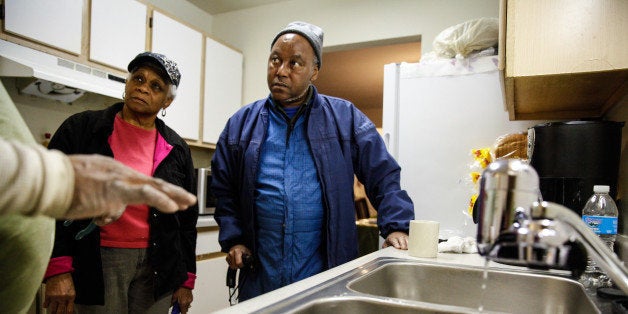
Flint's poisoned water supply finally became a national crisis, but not until over 9,000 children drank the water. Lead is a neurotoxin, which is particularly noxious for developing children. Exposure to lead can result in a wide range of maladies from vision loss to learning disabilities and even death.
We have known about the toxic effects of lead for quite some time and the danger that lead poses for children's developing brains has been understood since the 1940s.
Given all we know about the dangers of lead poisoning and the precautions that are routinely taken to prevent it, how could Flint's drinking water have become so polluted for so long (since the spring of 2014)?
Flint residents complained about contaminants in their drinking water almost immediately after the city changed its water supply to the Flint River. The response to their complaints, which test results substantiated, was to dump chlorine in the water to kill the bacteria. The chlorine, a well-known corrosive, added to corrosives already present and caused Flint's pipes to leach dangerously high concentrations of lead. Treating the dirty water with chlorine seems simple enough except that a 2011 study had found that given the condition of Flint's pipes, water from the Flint River would have to be treated with an anti-corrosion agent before use.
The cost of that treatment was estimated at about $100 a day. The costs of repairing the damage now are now estimated between $1 to $1.5 billion (not including the incalculable cost of whatever irreversible brain damage may have occurred).
Records now reveal that concerns about Flint's water persisted throughout 2014 and into 2015. Yet those responsible for the water supply maintained the water was safe. Finally in September 2015, Dr. Mona Hanna-Attisha, a pediatrician and professor at the Hurley Medical Center in Flint, reported high levels of lead in her patients' blood and took her findings public.
Instead of an immediate and decisive response to her findings, officials countered that she was causing "hysteria" and that she and others were turning the issue into "political football."
Fortunately for the children of Flint, Dr. Hanna-Attisha didn't quit in the face of intimidation. Epidemiologists validated her findings and public inquiry exposed the shocking negligence of state officials responsible for the safety of Flint's citizens.
As is always the case in such tragedies, we immediately look for the villains. There are plenty to be found including Michigan's Governor Rick Synder. Yet there is something about this particular crisis that can't be reduced to individual malfeasance. Is it pure coincidence that this tragedy occurred in Flint, which is the second poorest city in our country and over 50% black?
The tragedy in Flint is a symptom of America's growing inequality, which segregates and marginalizes entire communities. Although the citizens of Flint immediately protested their dirty water supply, they lacked sufficient political influence to capture the attention of those responsible for the public safety. The "better off" citizens of Michigan, who could have exercised their political clout, simply weren't close enough to their fellow citizens in Flint to know about what was happening to them and their children.
If we learn anything from Flint, it is that the tragedy that occurred there cannot be reduced to the failure of a few individuals. Flint is a manifestation of a collective breakdown within our democratic society; we are all responsible.
There is another kind of neurotoxic poisoning that has yet to make the headlines or rise to the level of a national state of emergency. This neurotoxin, which affects 15.5 million or 20% of our nation's children, has thus far escaped public notice in spite of the dire warning of pediatricians, public health experts, and developmental neuroscientists.
Put simply this neurotoxin is poverty. The stresses associated with poverty can have devastating effects on children's developing brains and cardio-vascular systems. Children are by their very nature dependent on their elders to provide the conditions that will support their development and well-being.
All of us have a moral responsibility to protect them and to provide them with ample opportunities to flourish as human beings. This is not a matter of political ideology. This is a matter of simple intergenerational justice.
Children have a right to our care. We have the resources to mitigate and even prevent the devastating effects of child poverty. The United States has the second highest child poverty rate of the 35 most economically advanced countries of the world, behind only Romania.
Yet income inequality has created a toxin in American culture leading to a collective blindness about the plight of poor children. Religious leaders, teachers, coaches, pediatricians, parents and all of those charged with the care of children, wherever we live, need to become courageous champions for children like Dr. Hanna-Attisha. Together, and only together, can we overcome the toxicity of indifference to care for our young.